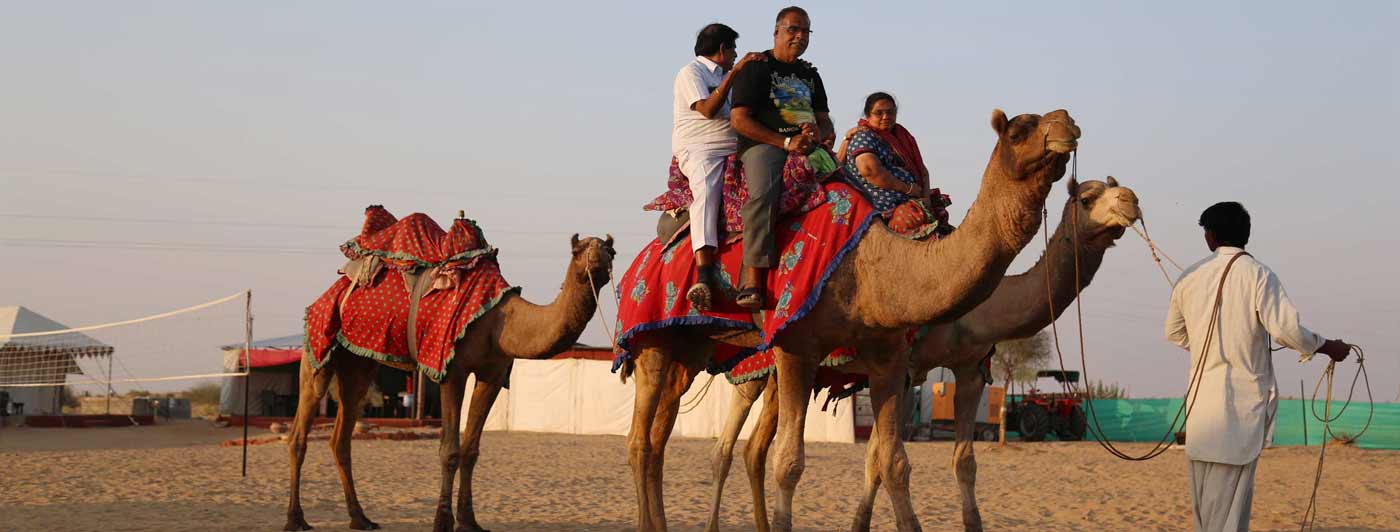Introduction
Jaisalmer Fort, often called Sonar Quila or the Golden Fort, stands as a testament to the enduring history and culture of Rajasthan. Situated amidst the vast Thar Desert, this iconic fort is one of the largest and oldest living forts in the world. Built in 1156 AD by Rawal Jaisal, the fort has witnessed centuries of political and cultural evolution. Its architectural grandeur and historical significance make it an integral part of India’s rich heritage.
What Makes Jaisalmer Fort Unique?
Jaisalmer Fort is a striking example of Rajput architecture. Constructed using golden sandstone, it gleams under sunlight, giving it an ethereal golden hue. Unlike many other forts in India, Jaisalmer Fort is still inhabited. Approximately one-fourth of Jaisalmer’s population resides within the fort’s walls, maintaining its vibrant character as a “living fort.”
The fort’s uniqueness lies not only in its stunning appearance but also in its strategic location. Perched on Trikuta Hill, the fort provides panoramic views of the surrounding desert and the city below. Its labyrinth of narrow lanes, adorned with ancient havelis, temples, and shops, encapsulates the essence of Rajasthan’s historical and cultural fabric.
History of Jaisalmer Fort
Jaisalmer Fort was established by Rawal Jaisal, a Rajput ruler, in the mid-12th century. The fort served as a crucial trading hub on the ancient Silk Route, connecting India with Central Asia. Over centuries, it witnessed numerous invasions and battles, particularly between Rajput clans and foreign invaders like the Mughals.
Despite its tumultuous history, Jaisalmer Fort has retained its architectural brilliance. It represents a blend of military ingenuity and aesthetic elegance. The fort’s walls, standing 250 feet tall and reinforced by 99 bastions, made it nearly impregnable.
Architecture of Jaisalmer Fort
The fort’s architectural design is a masterpiece of medieval engineering. Built using yellow sandstone, the structure harmonizes beautifully with the desert landscape. The fort’s gateways—Akshay Pol, Suraj Pol, Ganesh Pol, and Hawa Pol—are intricately designed and served as defensive barriers against invading forces.
Inside the fort, visitors encounter a network of narrow lanes leading to exquisite havelis, temples, and public squares. The Jain temples within the fort are particularly noteworthy for their intricate carvings and sculptures. The Laxminath Temple, dedicated to Lord Vishnu and Goddess Lakshmi, is another significant structure reflecting the spiritual devotion of the Rajput rulers.
Cultural Significance
Jaisalmer Fort is not merely a historical monument; it is a vibrant cultural hub. The fort’s inhabitants—artisans, shopkeepers, and families—keep its legacy alive. Visitors can explore local craft shops selling traditional Rajasthani textiles, jewelry, and handicrafts. These crafts reflect the unique artistic traditions of the region, passed down through generations.
The fort also hosts cultural festivals that celebrate Rajasthan’s heritage. Events like the Jaisalmer Desert Festival bring the fort to life with folk music, dance performances, and camel races, offering visitors an immersive experience.
Challenges Faced by Jaisalmer Fort
Despite its grandeur, Jaisalmer Fort faces significant preservation challenges. The increasing population within the fort, combined with modern construction techniques, has strained its ancient infrastructure. Water seepage during monsoons further exacerbates the degradation of its sandstone walls.
Efforts by organizations like UNESCO and the Indian government aim to address these issues. Conservation projects focus on stabilizing the fort’s foundations and ensuring sustainable living conditions for its residents.
How to Visit Jaisalmer Fort
Jaisalmer Fort is accessible from all major cities in Rajasthan. Visitors can explore its alleys, marvel at its architecture, and experience the vibrant life within its walls. The fort is open year-round, but the best time to visit is during the winter months, from November to February, when the desert’s climate is most pleasant.
For those looking to explore more of Jaisalmer, staying at a nearby Jaisalmer Desert Camp offers a unique desert experience. Additionally, visitors can enjoy the comforts of a Luxury Tent in Jaisalmer to complement their exploration of the Golden City.
Conclusion
Jaisalmer Fort is more than just a historical structure; it is a living testament to India’s rich cultural heritage. Its unique architecture, vibrant culture, and historical significance make it a must-visit destination. As efforts continue to preserve its legacy, the fort remains a symbol of resilience and a source of inspiration for generations to come.
Whether you’re a history enthusiast, an architecture admirer, or a cultural explorer, Jaisalmer Fort promises an unforgettable journey into the heart of Rajasthan’s golden past.

